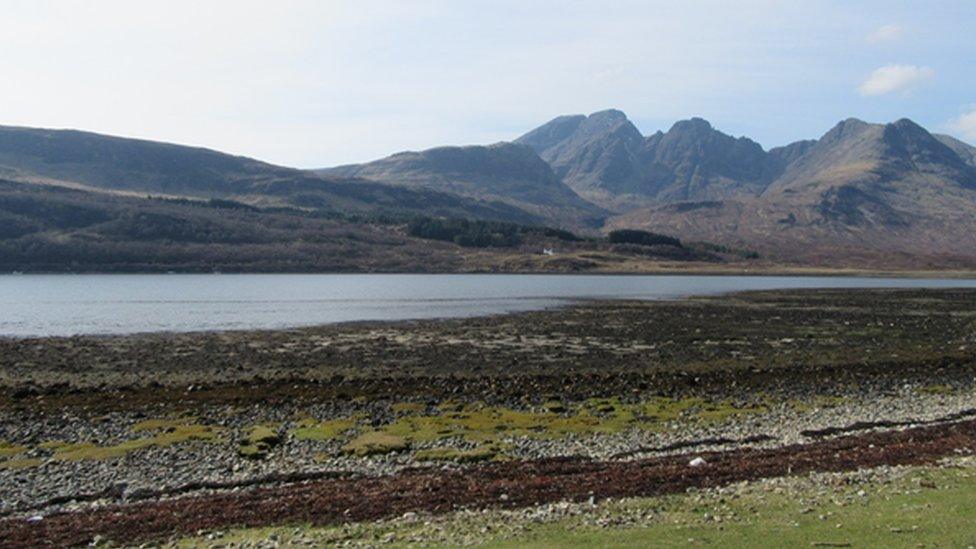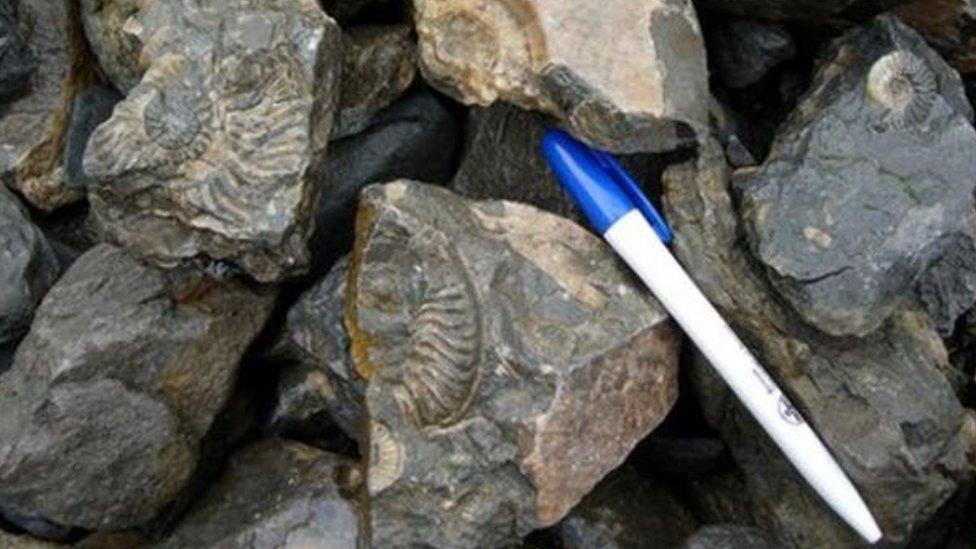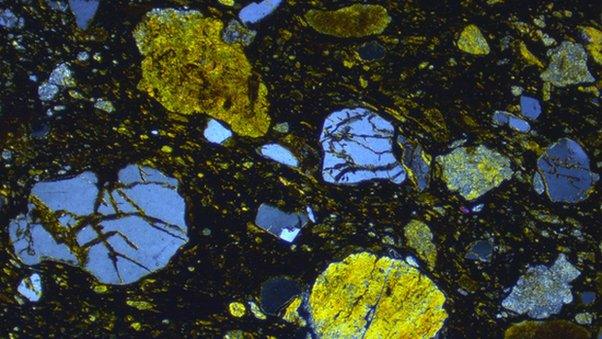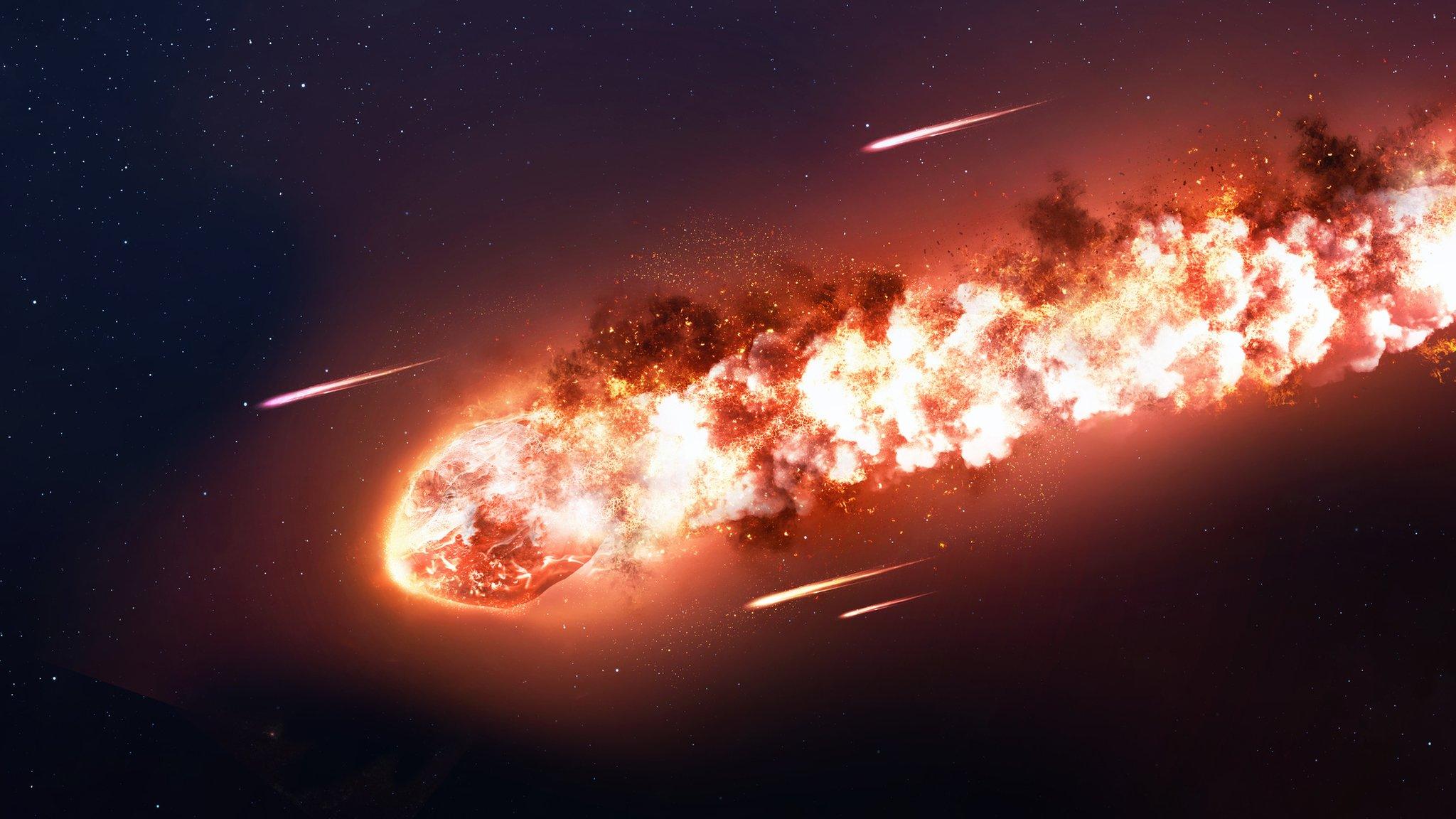Space rock taken from Skye's ancient meteorite impact site
- Published

A thin section view of what is known as meteoritic ejecta deposit found at the impact site in Skye
Geologists have raised concern about rocks being taken from a 60-million-year-old meteorite impact site in Skye.
The deposit of meteoritic minerals discovered last year below layers of lavas, just south of Broadford, had not previously been found on Earth.
Scottish Natural Heritage (SNH) said it had been alerted to sales on the internet of space rock from Skye.
It said removing any of the deposit was unauthorised and could contravene the Land Reform (Scotland) Act 2003.
Dr Colin MacFadyen, a geologist at SNH, said: "The recent discovery by geologists of meteorite deposits on Skye is yet another example of Scotland's tremendous geological heritage and it's distressing to find out that mineral hunters have been targeting the site.
"Reports that samples removed from Skye have been on sale via the internet is extremely concerning and disappointing as we understand that the meteorite deposit is vulnerable to damage and theft.
"We are working with the researchers and land owners to safeguard the deposits and ensure they are available for future research.
"We also appeal to people not to remove any of the deposit which has major scientific importance and help us keep an eye out for those who do."

Geologists from Birkbeck, University of London, discovered the impact site
Dr MacFadyen added: "This is yet another highly significant aspect of Scottish geology - evidence of a catastrophic event from which we could learn a lot in terms of understating the threat to humanity from extra-terrestrial space rock.
"We hope that in time there will be a public display of the material which will inspire further interest in this extra-terrestrial aspect of Scotland's nature."
Stardust mission
Dr Simon Drake, from Birkbeck, University of London, made the discovery of the impact site with colleague Dr Andy Beard.
They made their find while exploring volcanic rocks.
Meteoritic minerals were found below layers of lavas, dated to volcanic activity as much as 61.54 million years ago.
While the minerals had not previously been found on Earth, a sample of the same minerals were collected as particles in the wake of comet Wild-2 by Nasa's Stardust mission in 2006.
Dr Drake believes the impact may have played a part in Skye's volcanological evolution.

Fossils have previously been damaged in Skye by souvenir hunters
Skye's ancient geology has been plundered for souvenirs before.
In 2011, tonnes of rock was disturbed at a Jurassic site in what was been described as one of Scotland's most reckless acts of fossil collecting.
The stone was dug away from cliffs near Bearreraig Bay in an apparent organised search for valuable specimens.
Skye is a key dinosaur fossil site in Scotland.
Bearreraig Bay, north of Portree, is within a Site of Special Scientific Interest (SSSI). A crowbar was suspected to have been used to prise away some of the rock.
Dinosaur footprints were also thought to have been removed from Valtos on the island.
- Published14 December 2017

- Published14 September 2016
